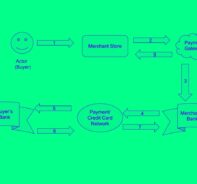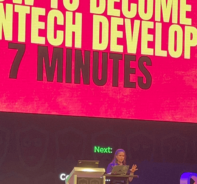With the rise of cross-border ecommerce, more Devs are turning to Python as their language of choice.
Going global is becoming increasingly complicated for eCom devs. Cross-border commerce by its very nature dictates that you need to bring multiple disparate systems together and execute it flawlessly. Everything from inventory management, tax, currency presentment, fraud, payments, shipping applications and more all impact your end-user experience. Why would you want to leverage Python for your eCommerce integration? Python provides the opportunity to solve some of those tricky integration issues inherent in any eCommerce application.
Here are a couple of things to keep in mind about a Python payment system before you begin your next integration.
1) Secure-ability
In recent years, Python has become one of the most secure languages with a low amount of security vulnerabilities and those numbers seem to keep decreasing. Here’s why:
- Its syntax is less strict than some other languages and it comes with a powerful interpreter.
- Python is also a scripting language you can use to extend other products.
- Porting older scripts can be less challenging as well for security reasons.
2) Cross-Platform Compatibility
Python is an interpretable language, so if the user has Python installed, which is pretty much all Linux, Macs, and Windows – then no compile needed. Python is great for building locally, however, your users are online and interested in shopping in-app or in-browser.
There are plenty of frameworks out there for getting your Python mobile development done. Which makes Python cross-platform capable given the right instruction.
3) Adaptability
One thing Python is very good at is math, the more complex, the more it shines. Think about use cases for various recommendation engines, or fraud detection tooling to name a few that Python can help with on your backend and serve upon your frontend in JavaScript. You can also easily bring AI/ML into your online experience and serve up recommendations based on your past experience or purchase history.
4) Quality
Using Python to build your online business can reduce some of the most critical pain points when it comes to development. Python is a more readable language which means you have a better chance of getting it right the first time.
Also, with Python, you can write your codebase in fewer lines, which theoretically means fewer chances for errors.
5) API-ability
The next step is to talk about bringing all the pieces together within your application – think accounting, inventory management, customer insights, fraud, and payments. With Python you can create a single online experience for your customer by shaking hands and talking to many APIs along the way.
6) Scalability
Your store can grow at the speed of you, or better yet your customer. Python is scalable and many large companies use Python for their backend, so YMMV, but for most eCommerce applications Python should work well.
This isn’t the time or place to argue limitations, such as multiprocessing or compilers to help overcome the limitations of available memory. Nothing scales forever, for now anyways. Go distributed or go home.
Read the Rapyd Docs
Head over to Rapyd Documentation and read up on some use cases for eCommerce and the various payment methods offered.
We have a guide available on full API integrations to the Rapyd Collect platform, no-code solution plugins/extensions for accepting payments on your WordPress site. We even have full-on code samples in our API reference on Create Payment in Python.
After reading some of the documentation, go get your API keys on the Rapyd Client Portal – then start building your Python eCommerce application today.
Have questions about your requirement needs or want to talk to a payments expert? Maybe you want to know why we didn’t mention Django in this article. Contact support@rapyd.net to get help right away.
Subscribe Via Email
Thank You!
You’ve Been Subscribed.



